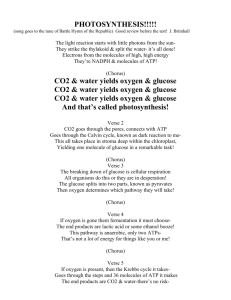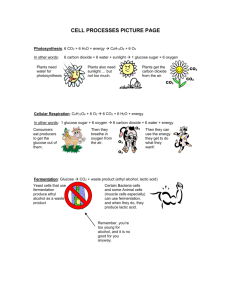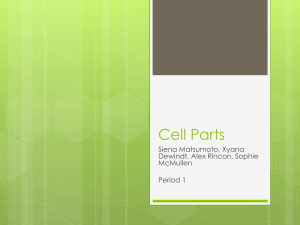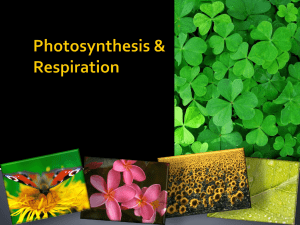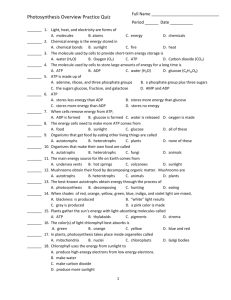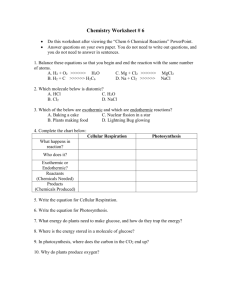Study_Guide_for_Exam_2
advertisement
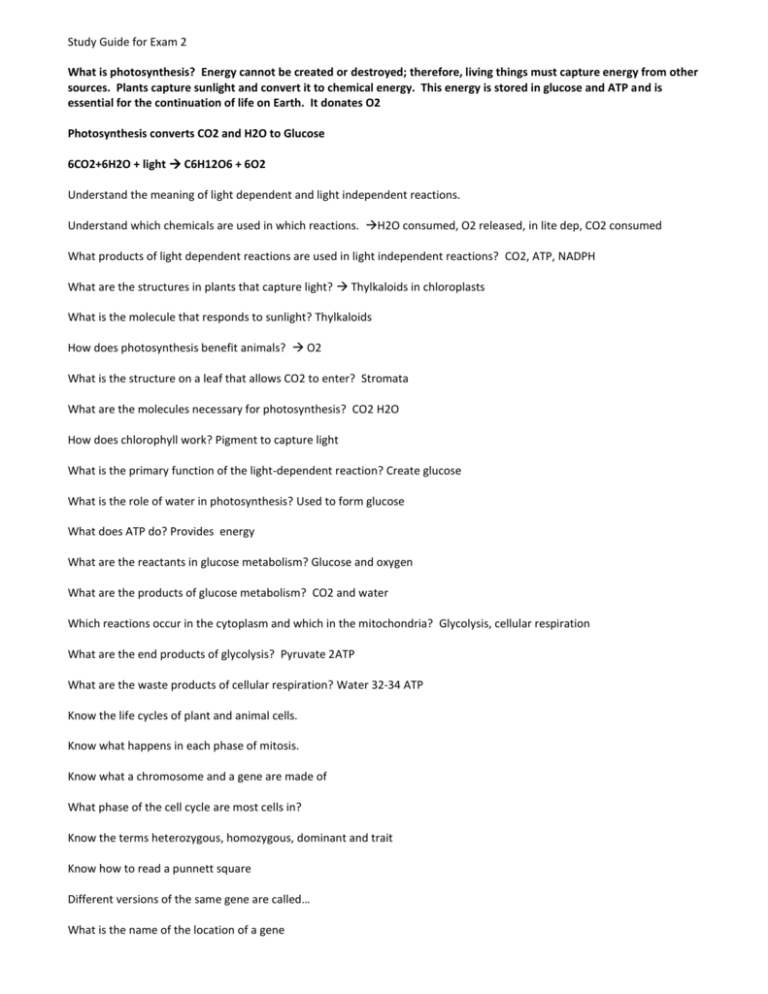
Study Guide for Exam 2 What is photosynthesis? Energy cannot be created or destroyed; therefore, living things must capture energy from other sources. Plants capture sunlight and convert it to chemical energy. This energy is stored in glucose and ATP and is essential for the continuation of life on Earth. It donates O2 Photosynthesis converts CO2 and H2O to Glucose 6CO2+6H2O + light C6H12O6 + 6O2 Understand the meaning of light dependent and light independent reactions. Understand which chemicals are used in which reactions. H2O consumed, O2 released, in lite dep, CO2 consumed What products of light dependent reactions are used in light independent reactions? CO2, ATP, NADPH What are the structures in plants that capture light? Thylkaloids in chloroplasts What is the molecule that responds to sunlight? Thylkaloids How does photosynthesis benefit animals? O2 What is the structure on a leaf that allows CO2 to enter? Stromata What are the molecules necessary for photosynthesis? CO2 H2O How does chlorophyll work? Pigment to capture light What is the primary function of the light-dependent reaction? Create glucose What is the role of water in photosynthesis? Used to form glucose What does ATP do? Provides energy What are the reactants in glucose metabolism? Glucose and oxygen What are the products of glucose metabolism? CO2 and water Which reactions occur in the cytoplasm and which in the mitochondria? Glycolysis, cellular respiration What are the end products of glycolysis? Pyruvate 2ATP What are the waste products of cellular respiration? Water 32-34 ATP Know the life cycles of plant and animal cells. Know what happens in each phase of mitosis. Know what a chromosome and a gene are made of What phase of the cell cycle are most cells in? Know the terms heterozygous, homozygous, dominant and trait Know how to read a punnett square Different versions of the same gene are called… What is the name of the location of a gene What is a mutation? Be able to figure out if parents are homo or heterozygous for a trait by the ratio of traits in their offspring Know the structure of DNA … well! Know the difference between DNA, gene and chromosome Know the terms transcription and translation and where they occur in the cell What are genes and what are they made of? What is RNA? Of what is it composed? What is ribosomal RNA? What is the number of consecutive mRNA bases needed to specify an amino acid? What is the name of the molecule that delivers amino acids to a ribosome?

